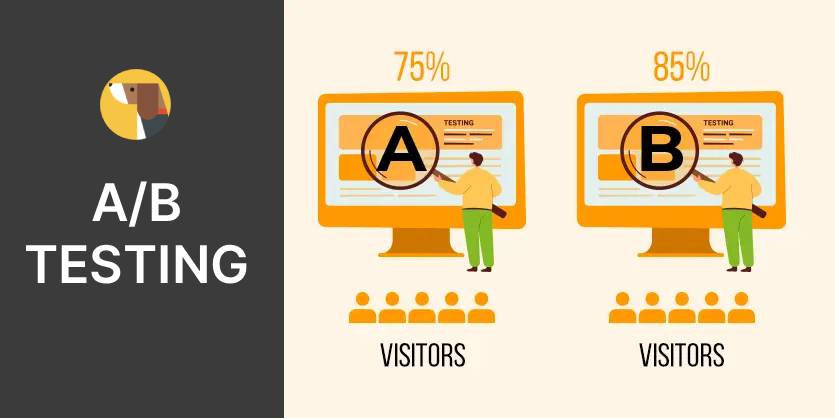A/B testing is one of the simplest and most powerful ways to learn what truly works with your audience. Instead of guessing, you test two versions of a page, email, or element side by side — and let real user behavior decide the winner.
The good news? You don’t need to be a data scientist or run a massive e-commerce store to use it. With today’s tools, even small websites can test ideas and see measurable improvements.
What You Need Before Starting
Before diving in, here are the essentials:
- A clear goal → What do you want to improve? Clicks on a button, sign-ups, or purchases?
- Something to test → Change only one thing at a time (headline, button color, image, layout).
- Some traffic → More visitors = faster results, but even small sites can learn from smaller experiments.
✨ Pro tip: If you don’t have much traffic, focus on big-impact changes (like sign-up forms or CTAs) instead of tiny design tweaks.
PY – Founder of UXsniff
Step-by-Step: How to Do A/B Testing
Step 1: Identify what to test
Pick a specific element that might influence user behavior. Examples:
- The call-to-action button text (“Start Free Trial” vs “Get Started”).
- The headline on your landing page.
- The placement of a sign-up form.
Step 2: Create Version A and Version B
- Version A = your current design (control).
- Version B = a small change to test (variant).
Keep it simple. If you change too many things at once, you won’t know what caused the difference.
Step 3: Split your traffic
Send part of your visitors to Version A and part to Version B. Typically, it’s 50/50.
Modern tools make this automatic, so you don’t have to manually split visitors.
Step 5: Analyze the results
After running the test long enough, compare the results. Did Version B actually outperform Version A? If yes, you’ve found a winner. If not, stick with Version A and test something new.
Common Mistakes to Avoid
- Changing too many things at once → You won’t know what worked.
- Stopping the test too early → Give it time to gather enough data.
- Forgetting about mobile users → Test across devices.
- Overcomplicating the process → Start simple and build confidence.
Tools That Make A/B Testing Easy
Traditionally, tools like VWO and Optimizely were the go-to platforms, but they can feel heavy for small teams.
Today, you can also use simpler, AI-powered tools like Brainybear A/B Testing. It helps you:
- Run tests in just a few clicks.
- Analyze results automatically.
- Learn from real user behavior without needing a developer.
👉 Try Brainybear to A/B test your website in minutes — no coding needed.
Wrapping Up
A/B testing takes the guesswork out of design and marketing. Instead of wondering what works, you can test and know for sure.
Remember: start small, keep your goals clear, and keep learning.
➡️ Next up in this series: Best A/B Testing Tools: Compare UXsniff, Nelio, and Other Top Platforms
